- Home
- John Updike
Odd Jobs: Essays and Criticism Page 12
Odd Jobs: Essays and Criticism Read online
Page 12
Our National Monuments
THIS DEMOCRACY’S FAVORITE MONUMENTS have evolved through processes that in retrospect seem random and chancy, out of seeds of inspiration in one or two determined individuals, under clouds of debate and delay and budget shortfall, into an impalpable rapport with the masses. In 1987 the seven most visited national sites were, in order—according to the statistics of the U.S. Park Service—the Lincoln Memorial, the Vietnam Veterans Memorial, the Statue of Liberty, the St. Louis Arch, the Jefferson Memorial in Washington, Mount Rushmore, and the Washington Monument. The poor showing of the last-named seems surprising; but one has to stand in a three-hour line, on a summer day, to ride to the top of the monument, whereas the Lincoln Memorial is an easy walk-through at the end of the Reflecting Pool. The nearby Vietnam Veterans Memorial is undoubtedly the nation’s most emotional spot now, its eloquent starkness of engraved black panels crowded with the written and floral tributes of wives and parents and sweethearts and fellow soldiers for whom the war and its wounds are still fresh memories. But such warm-blooded immediacy is rare in major monuments; Washington was dead for seventy-seven years, Lincoln for fifty-seven, and Jefferson for well over a century when their monuments were at last dedicated.
At the time of his death in 1885, Ulysses S. Grant was, we are assured, “undoubtedly the most popular man in America.” A crowd of over one million attended his funeral and, twelve years later, the dedication, in New York City, of the Grant Monument, popularly known as “Grant’s Tomb”—a classical mausoleum comparable in sheer size and costliness only, in nineteenth-century America, to the Washington Monument and the Statue of Liberty. But over the years the crowds who came to this vast shrine thinned, the last veteran in the Grand Army of the Republic passed away, and Grant’s heroic generalship became diluted, in our shifting historical memory, by our awareness of his weaknesses and the sad corruption of his Presidential administrations. Warmth has ebbed from Grant’s memorial, though its park is still gratefully used. The eventual fate of all monuments is to become, like the Sphinx, a riddle.
The word “monument” derives from the Latin monere, “to advise or remind.” To achieve its monitory, mnemonic objective, the monument should be striking in some way, usually in its great size, from which comes the secondary meaning of “monumental.” The Washington Monument was and still is the world’s tallest masonry structure, the Statue of Liberty its largest freestanding statue, the faces of Mount Rushmore its grandest examples of sculpture, the St. Louis Arch—properly, the Jefferson National Expansion Memorial—its highest arch by far, containing more stainless steel than any other human project. To erect these symbolic marvels, engineers must cope with unprecedented challenges and create inventive solutions.
For instance, the Bunker Hill Monument, a granite obelisk two hundred twenty-one feet high in the Charlestown section of Boston, occasioned, in 1826, the building of the first railway in the United States. The monument, which, in the words of a fund-raising flier, “As it will commemorate the Greatest Event in the history of civil liberty [the battle of June 17, 1775], should be, and shall be, the grandest Monument in the world,” required large blocks of gray granite from a quarry in Quincy that thenceforth was named Bunker Hill Ledge. A three-mile rail line from the quarry to the shore was constructed, with granite sleepers, wooden rails topped by iron plates, and a continuous chain that enabled the loaded cars, travelling downhill, to pull up the empty ones. Yet the loading and unloading at the Quincy and Charlestown wharves proved troublesome, and the Granite Railway Company, failing to justify its disproportionate expense, was replaced by the time-honored method of ox teams, which pulled the blocks the twelve overland miles to Bunker Hill. The original design called for courses of stone eighteen inches high; the final architect, Solomon Willard, asked for blocks two and a half feet wide, and twelve feet long. The extraction and handling of such massive stones prompted the invention of a number of ingenious hoisting jacks, with worm gears and lifting wedges. Most important, a steam-driven crane was designed by the Boston seaman Almoran Holmes; its boom had a range of fifty feet and could be rotated through three hundred sixty degrees. The latter stages of construction were greatly eased and speeded by this improvement over ox-powered hoisting. Willard wrote admiringly, “This hoisting apparatus is remarkable for its compass, and for the ease and grace with which it performs its work.… This apparatus, with some variation, has come into general use, and is so well contrived for the purpose intended, as to leave little to be wished for, in regard to apparatus for hoisting.” Also, marvels of stone carving were achieved to fit inside the obelisk a center core, in exactly twice as many courses as the exterior, with a curved stair and a conical air space.
An obelisk manages to combine, in its form, aggressiveness and eternity, peace and a spear. Obelisks in ancient Egypt, appearing first as grave markers, came to be used to celebrate pharaonic jubilees and, their pyramidal summits plated with shiny electrum, as symbols of sun worship. Despite their immense weight, a number were taken to Europe, and one such “Cleopatra’s needle” adorns New York City’s Central Park. The obelisk became a popular nineteenth-century motif of tombstones and a monumental rival to the triumphal column, a Roman form found in the Place Vendôme, in Trafalgar Square (Nelson’s column), and in Baltimore, as a monument to George Washington. The idea of a monument to Washington is as old as the Continental Congress, which in 1783 passed a resolution in favor of an equestrian statue of the toga-clad general. Washington himself objected to the expense and the matter was dropped. No sooner was he dead, however, in 1799, than the matter revived; the jurist John Marshall proposed a marble mausoleum in the form of a pyramid one hundred feet square at the base. Three decades later, Henry Clay cried in Congress, “As a monument, rear it; spend on it what you will; make it as durable as the Pyramids, eternal as the mountains!” In 1836 a competition was held, and the contending entries included Italian campaniles, English Gothic towers, and, most grotesquely, a structure, proposed by a California architect, showing “affinity with some of the better Hindu pagodas” and featuring a giant statue of Washington “attended by ladies gracefully leaning on their elbows.” Even the winning entry, by Robert Mills, called for gigantic stars on the obelisk, at its six-hundred-foot-high tip a statue of Washington in a Roman chariot driving four horses, and around the base a colonnaded Greek temple one hundred feet high with thirty columns twelve feet across. All these elaborate features were fortunately dropped during the actual construction, one of the most prolonged and tortuous labors in the history of America’s sacred places.
In the three decades after Washington’s death, Congress had proved readier to come up with florid praise of the first President than with funds and legislation enacting a monument. In 1833, private citizens formed the Washington National Monument Society, which held a competition for the design and attempted to raise money by way of the 1840 census, awarding lithographs to contributors. By 1847, $70,000 had been collected, enough to finance the commencement of construction; on July 4, 1848, with impressive Masonic rites, a cornerstone was laid, though no one now knows which stone it was. By 1854, $300,000 had been raised, and the shaft had been raised to the height of a hundred fifty feet. There it stopped for over twenty years. The approaching War Between the States and its aftermath extended the interruption, but the affair of the “Pope’s Stone” was the immediate cause. As anyone who has walked up the steps inside the Washington Monument realizes, the interior walls hold about two hundred memorial stones donated by states, cities, organizations, Indian tribes, and foreign states. Pope Pius IX sent a block from the Temple of Concord in Rome, and the Know-Nothings, a xenophobic secret society especially antagonistic to Roman Catholicism, attacked the watchman on the night of March 5, 1854, carried off the “Pope’s Stone,” and presumably dumped it in the Potomac. The next year, on the eve of a substantial congressional appropriation for completion of the great shaft, the Know-Nothings broke into the office of the society, stole all the books and
records, and claimed to be in possession of the monument, which they promised to complete as “an American institution, supported by all Americans.”
But the easily observed change of color about a third of the way up the obelisk does not relate, as is sometimes thought, to a change from imported Italian to native marble. Up to 1854, the monument was faced with marble from a quarry at Texas, Maryland, just north of Baltimore. Upon resumption in 1879, four courses were laid with marble from Lee, Massachusetts; but this proved too expensive, and the remainder of its five-hundred-fifty-five-foot height was finished with marble from Cockeysville, in the Piedmont section of Maryland. In late December of 1884, thirty-six years after its unknown cornerstone had been laid, the monument was capped with a stone weighing a ton and a half and topped by a hundred-pound pyramid of pure aluminum. The giant obelisk was at this time the tallest structure in the world, and it remains, by civic decree, the tallest building in the nation’s capital.
Before the era of skyscrapers and airplane travel, such vertical monuments and mountaintops were the only means whereby men could view their world from above. Now that aerial views are commonplace, sacred places tend to hug the earth; indeed, the Vietnam Veterans Memorial descends into it, to the depth of ten feet. The most heroically high American monument is the Jefferson National Expansion Monument, designed by Eero Saarinen and erected to symbolize the city of St. Louis’s historical role as gateway to the West; it would arch over the Washington Monument with more than sixty feet of clearance. The construction of this great parabola of stainless steel, from 1962 to 1965, with the MacDonald Construction Company as general contractor, involved prodigies of improvisatory engineering. The arch was assembled of one hundred forty-two non-interchangeable segments, equilaterally triangular in cross-section. Prefabricated in Pittsburgh, they consisted of an outer skin of quarter-inch stainless steel and an inner skin of carbon steel; the gap between the skins, three feet at the bottom of the arch and less than eight inches at the top, was filled with reinforced concrete up to the three-hundred-foot mark and then left hollow but for interconnecting braces. The first six sections, to a height of seventy-two feet, were stacked by crawler cranes on the ground; for the rest, a kind of twin railroad into the sky was devised. Eighty-ton work platforms climbed the two legs of the arch on tracks of thirty-inch steel beams spaced twenty-four feet apart. Telescoping supports kept the work platforms, with their own heated shacks, tool sheds, and sanitary facilities, level as they climbed the arch. When a height of five hundred thirty feet was reached, the original plan to use guy cables for stability was scrapped in favor of that of a sixty-ton steel stabilizing truss nearly as long as a football field. Yet amid all these dimensions and tonnages an almost microscopic precision had to be maintained: an error of as little as a sixty-fourth of an inch would cause trouble at the top, when the two segments met. The steel walls were cambered one and a half inches every thirty-five feet to allow for welding deformation, and geometry control readings were taken at night, to eliminate the factor of uneven expansion in the sun’s heat. The last segment fit perfectly.
Heat expansion also figured in the construction of the Statue of Liberty nearly a century before. The outside of the one-hundred-fifty-one-foot-high statue consists of copper sheets three-thirty-seconds of an inch thick—a hair thicker than a penny—beaten into shape over wooden forms; its interior structure was designed by the great French engineer Gustave Eiffel. Eiffel concocted a gridwork of iron bars shaped to follow the convolutions of Frédéric Bartholdi’s statue; the armature bars were not directly attached to the copper skin but were fitted loosely into U-shaped saddles riveted to it, thus enabling the great sheets of shaped copper to expand and contract in the weather. In preparation for the renovation of the Statue in the 1980s, a team discovered that all 1,705 of these bars were frozen into place by corrosion; the replacement of 1,699 of them was one of the most painstaking and crucial, though unspectacular, aspects of the renovation, whose most prominent improvement was the de-electrification of the torch and a return to Bartholdi’s original concept of a gilded, reflective flame. The entire renovation, in passing, generated another monumental “most”: the scaffolding at no point touched the statue and was therefore the largest freestanding scaffolding ever built.
News stories about the heavily publicized restoration spoke of the pride and esprit de corps among the workmen. The quixotic actualization of these enormous symbols does seem to inspire the work crews. Our monuments generally have good safety records: the construction of the St. Louis Arch, calculated to cost the lives of thirteen workmen, in fact proved fatality-free, and the Mount Rushmore sculptures, though carved at a perilous height amid a number of mishaps, caused injuries but no deaths in their fourteen years of creation, from 1927 to 1941. Not the least accomplishment of Gutzon Borglum, the headstrong creator of the gigantic sculptures, was his uniting of a crew of mostly local South Dakota mine workers and roughnecks into an artistic instrument that, with dynamite and jackhammers, sensitively translated his vision to a granite mountaintop. One of the crew, Red Anderson, said shortly before his death thirty-six years after work stopped, “I think now that Rushmore has been ninety percent of my life.” Borglum himself devised the sling-seats that held the men secure as they drilled at the cliff-face. And Borglum, who had previously worked on Stone Mountain near Atlanta and there used a photo-projector for his aborted bas-relief, invented for Mount Rushmore a boom-and-plumb-bob arrangement whereby points could be transferred, at the enlargement of an inch to a foot, from his three-dimensional models to the rugged volumes of the mountain. Studying photographs of the plaster models, one is struck by how much more aesthetically successful the actual full-scaled heads are, emerging in their giant sunstruck simplicity from the natural mass of white granite. The monument, because of Borglum’s death and the advent of World War II, was left uncompleted; Borglum’s last model calls for the four Presidents to be carved down to the hems of their coats, with Lincoln’s hand clutching his lapel. A comic effect of crowding might have been produced among the mountainous half-giants, where the bodiless but finished heads have a surreal dignity in their close placement and abstract union with the natural rock.
A happy providence, it may be, has watched over our foremost national monuments, stopping them short at a grand simplicity. The Vietnam Veterans Memorial, we are surprised to learn, was first designed by Maya Lin with a row of toppling stone dominoes in front of the wall of names—an obstructing pun her Yale classmates persuaded her to eliminate. We are moved, often, by effects that can scarcely have been planned—the sheer loneliness, for example, of the Washington Monument on its bare knoll and the slight tilt of the round plaza of the United States Navy Memorial on Pennsylvania Avenue, a tilt that makes us feel we are on the deck of a ship with the statue, just a bit greater than life size, of the Lone Sailor and his duffle bag. This plaza, a map of the world carried out in two tones of granite, embodies a new breakthrough in stone cutting, a method of cutting an irregular line with a high-powered, computer-directed jet of water and silica slurry. Without this technique, which can slice two-inch granite a half-inch per minute on intricately curved cuts, the tightly fitting coastlines of the map could not have been carved. Advanced stoneworking techniques contributed as well to the emotional impact of the black granite tablets—imported from India, since all American granite was streaked with gray—that make up the Vietnam Veterans Memorial; the mirroring polish was imparted, in the final stage, by a felt buffer covered with tin oxide, which is finer than talc. The beauty and legibility of the lettering were finely calibrated; they are precisely thirty-eight thousandths of an inch deep, and were grit-blasted from the front, giving a central valley that minimizes shadow, with a fine aluminum oxide.
The newest major American monument, the planned Astronauts’ Memorial in Florida, also employs highly polished granite—a mirror-finished sheet, fifty feet wide and forty high, which will reflect the sky while angled mirrors behind it shine sunlight through the dead
astronauts’ names, which are perforated in the stone and filled with glass or a light-diffusing epoxy. The names—twelve men and two women have died so far in the space program—will thus appear to float in a reflected sky; the slab is mounted and motorized to track the sun through the day, and at night electric light will shine through the names. The emotional effect of this apparatus must wait upon its construction; in its depictions the memorial seems possibly too glitzy and tricky. Its designers claim that a technological venture warrants a technological memorial; but technology can outrace our aesthetic sense and trivialize perduring matter. We expect our monuments to be simple and still—emblems of permanence to which we bring the living, changing flowers of homage.
We expect monuments, too, to be low-maintenance and relatively immune to the erosions of time. In fact, nothing material is totally immune; even the giant faces of Mount Rushmore are constantly inspected for fissures and repaired. Rust and corrosion attack metal, frost and spalling attack stone, and vandalism and acid rain are on the rise. Frequent repairs of the Saratoga Battle Monument, a Gothicized obelisk erected over a century ago along the Hudson, cannot keep pace with the “structural distress” wrought by climatic dampness and cold. New York City, embarrassed by its plethora of ill-maintained monuments, has enlisted the private sector in an “Adopt a Monument” program. And there is a danger, even in our spacious capital city, of too many monuments; the long delay in building the Franklin Delano Roosevelt Memorial, though its funds have been already voted by Congress, shows a traditional American reluctance to monumentalize individuals. The severely simple horizontal monolith that Roosevelt himself designed to mark his grave at Hyde Park perhaps is already a perfect sufficiency. A monument needs space around it, and time as well. A clutter and proliferation of sacred symbols and sites is a sign of decadence in religion, including the secular religion of patriotism. A monument should be singular. It should be somewhat blank, like a battlefield long afterwards. Fate and happenstance have endowed this democracy with a constellation of remarkably varied and aesthetically impressive representations of our national adventure, and this endowment should be enlarged with care.

 Picked-Up Pieces: Essays
Picked-Up Pieces: Essays Bech: A Book
Bech: A Book Roger's Version: A Novel
Roger's Version: A Novel Seek My Face
Seek My Face The Carpentered Hen
The Carpentered Hen Pigeon Feathers: And Other Stories
Pigeon Feathers: And Other Stories Rabbit Is Rich
Rabbit Is Rich The Afterlife: And Other Stories
The Afterlife: And Other Stories Rabbit at Rest
Rabbit at Rest The Witches of Eastwick
The Witches of Eastwick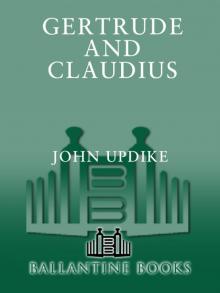 Gertrude and Claudius
Gertrude and Claudius Bech Is Back
Bech Is Back Hub Fans Bid Kid Adieu: John Updike on Ted Williams
Hub Fans Bid Kid Adieu: John Updike on Ted Williams Marry Me: A Romance
Marry Me: A Romance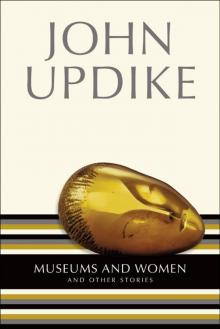 Museums and Women: And Other Stories
Museums and Women: And Other Stories My Father's Tears and Other Stories
My Father's Tears and Other Stories Collected Poems, 1953-1993
Collected Poems, 1953-1993 Trust Me: Short Stories
Trust Me: Short Stories Odd Jobs: Essays and Criticism
Odd Jobs: Essays and Criticism Rich in Russia
Rich in Russia Higher Gossip: Essays and Criticism
Higher Gossip: Essays and Criticism The Widows of Eastwick
The Widows of Eastwick In the Beauty of the Lilies
In the Beauty of the Lilies Rabbit, Run
Rabbit, Run The Early Stories: 1953-1975
The Early Stories: 1953-1975 Rabbit Redux
Rabbit Redux S.
S. Brazil
Brazil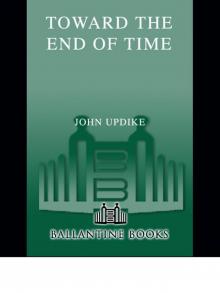 Toward the End of Time
Toward the End of Time The Centaur: A Novel
The Centaur: A Novel Assorted Prose
Assorted Prose Memories of the Ford Administration
Memories of the Ford Administration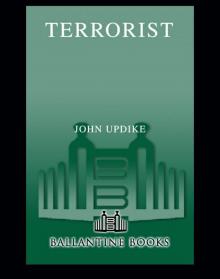 Terrorist
Terrorist Couples: A Novel
Couples: A Novel Bech at Bay
Bech at Bay The Music School: Short Stories
The Music School: Short Stories Villages
Villages S
S Roger's Version
Roger's Version Pigeon Feathers
Pigeon Feathers Higher Gossip
Higher Gossip Rabbit Redux r-2
Rabbit Redux r-2 Memories of the Ford Administration: A Novel
Memories of the Ford Administration: A Novel The Centaur
The Centaur Marry Me
Marry Me Picked-Up Pieces
Picked-Up Pieces Bech
Bech Rabbit Remembered
Rabbit Remembered Trust Me
Trust Me The Early Stories
The Early Stories Odd Jobs
Odd Jobs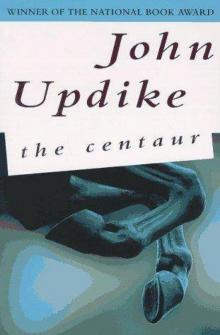 The Centaurus
The Centaurus The Afterlife
The Afterlife The Music School
The Music School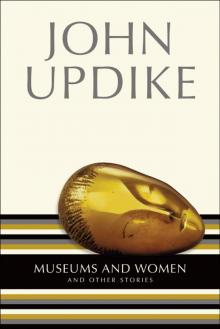 Museums and Women
Museums and Women Couples
Couples